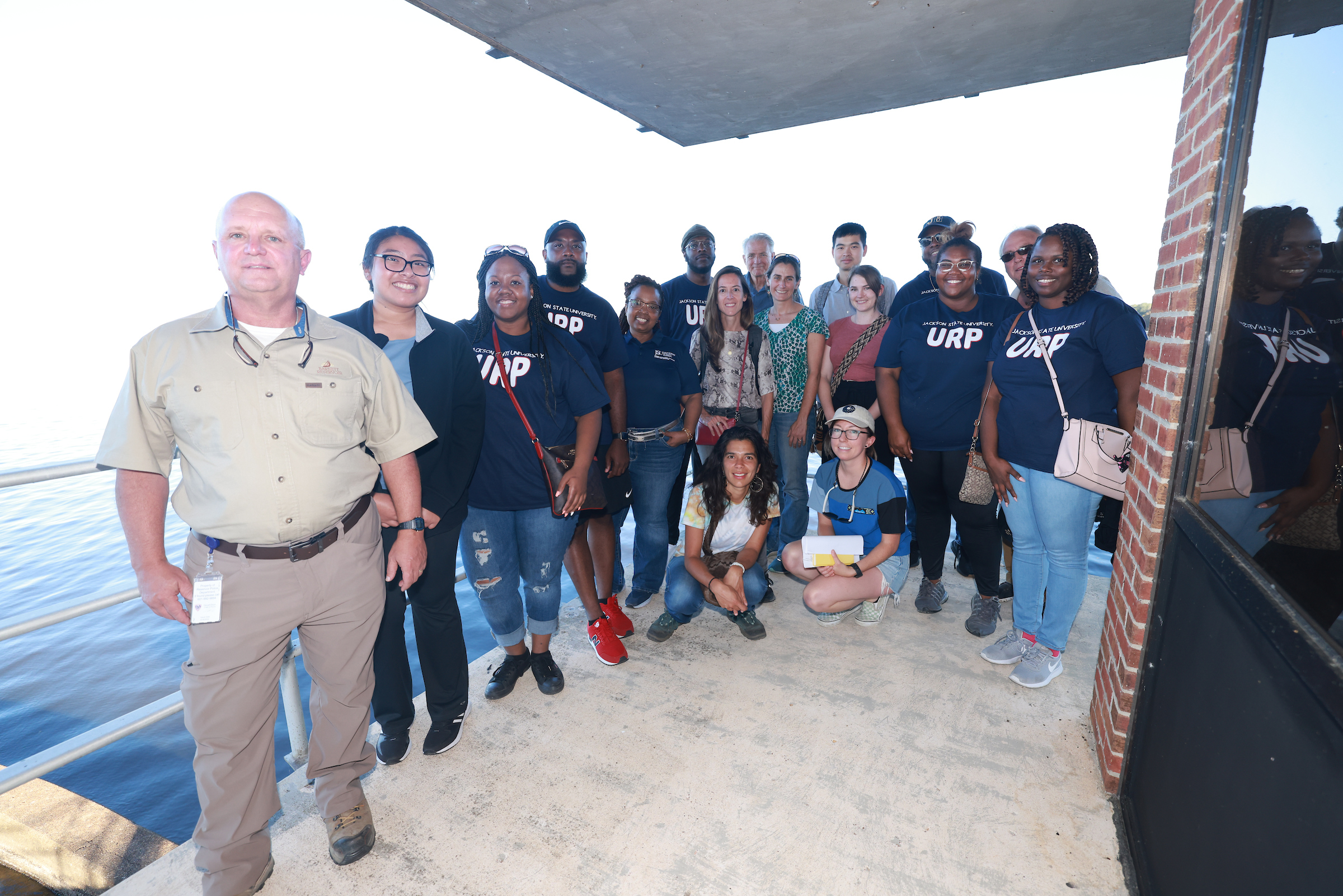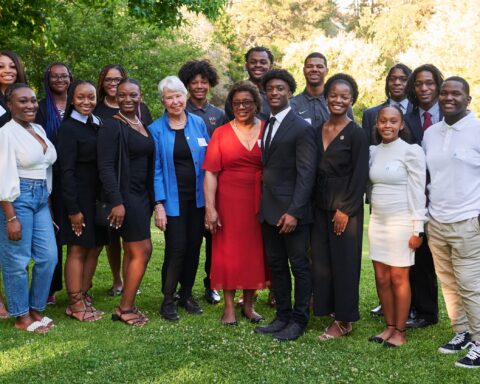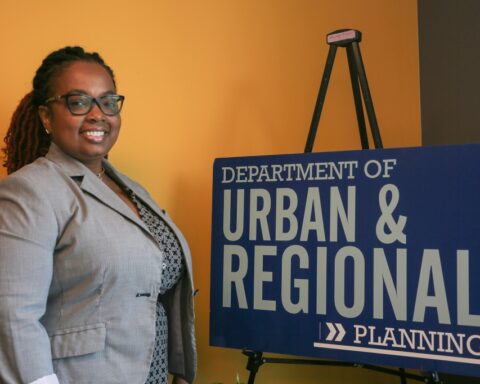Courtesy of Jackson State University
Jackson State University’s Department of Urban and Regional Planning (DURP) and the University of California partnered on a first-time exchange program between the universities earlier this year.
Last month, UC Berkeley students traveled to JSU for the second half of an environmental project focusing on public riverfront access and social connectivity and equity. The project included a tour of waterfronts along the Mississippi River and the Ross Barnet Reservoir, including the control center and the water gates that regulate flooding in the metro area.
In May, the exchange program began with a group of JSU DURP graduate students traveling to UC Berkley to observe levies and public access points along the Sacramento River.
“It’s amazing because we have landscape architecture students from UC Berkeley and urban planners from Jackson State, and putting the two together allows them to feed off one another. There is so much interaction, dialogue and learning,” said Berneece Herbert, Ph.D., who serves as chair for DURP and the project PI. “There’s a lot of synergies, and I’m really excited about what we can do in the future.”
UC Berkeley Professor Matt Kondalf, Ph.D., and Herbert spent the previous year planning the exchange between the two institutions. The idea was to combine the two diverse groups of next-generation scholars to give them insight into the challenges of providing public access to riverfronts and examine issues of flooding, access and social equity.
“When you think back, historically, riverfronts were the main recreational open space area. People could launch boats, swim, and all kinds of stuff,” Kondalf explained. “Increasingly, because of the installation of flood control infrastructure, levies, and other structures, we’re preventing people from being able to access these riverbanks.”
Kondalf also noted how he and his students observed the limited public access to the state’s largest river.
“When you consider how important the river is to the landscape and people here historically, some of the experiences from Vicksburg and Sacramento can also be applied more broadly in Mississippi to provide more public access points for people.”
The two professors agreed that partnerships like this could result in students approaching issues in unique and creative ways. The two universities plan to continue studying climate change, flooding, and pollution and how it affects public access to natural environments such as rivers.
Before touring the Ross Barnett control center, the two groups listened to a presentation about the history of the permanent water source constructed in the 1960s. The two groups were then able to learn about the daily operations of the infrastructure at the Ross Barnett reservoir.
UC Berkeley Ph.D. student Adrienne Dodd is researching flood risk and disasters causing long-term displacement and was excited to see the Mississippi River for the first time. She said she looked forward to speaking with stakeholders impacted by the recent flooding in Jackson and surrounding areas.
“Seeing these places in person is very important; It’s transformative. Just sitting in an office and reading, you can only learn so much and can’t really feel the scale of what you’re reading about,” Dodd said. “Coming here in person and seeing the lives at stake is really important, and I’m excited to be a part of the big river project.”
Dodd said it was fascinating to experience a different region of the country and observe the vast spillway at the reservoir compared to the smaller hand-powered flood control gates she toured in Sacramento.
JSU DURP Ph.D. student Bri’Anna Baber emphasized the importance of large prominent universities partnering with HBCUs and the benefits that erupt from the cooperative.
“A lot of people like to say that having an HBCU partner is minimal, but I think everyone must understand that there are individuals at HBCUs doing the same type of studies, research and work that is happening at PWIs,” explained Baber. “It is very critical to understand that we are here. We are Black, young and enterprising.”
At the end of each exchange, the students presented their findings and proposed ideas for future developments in the observed areas. Herbert said this was just the beginning of more collaborations to come.



